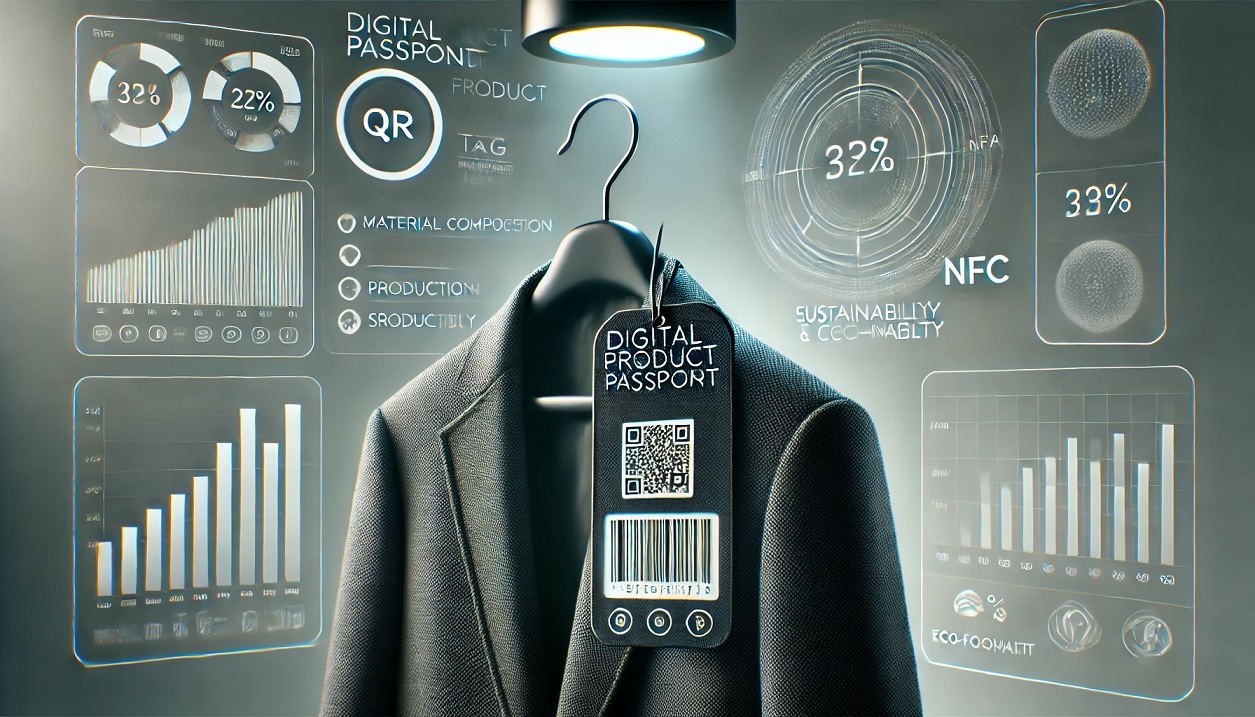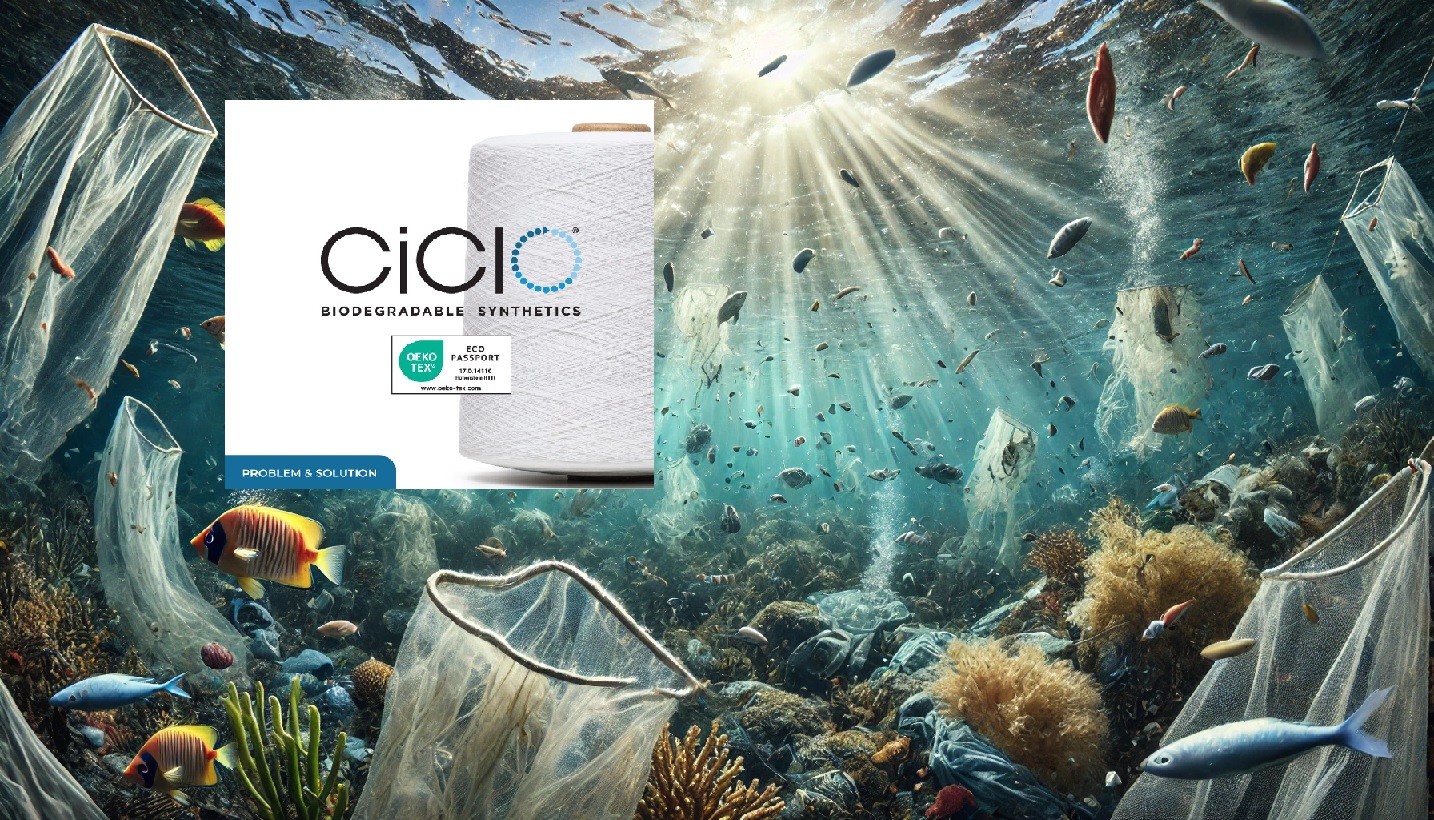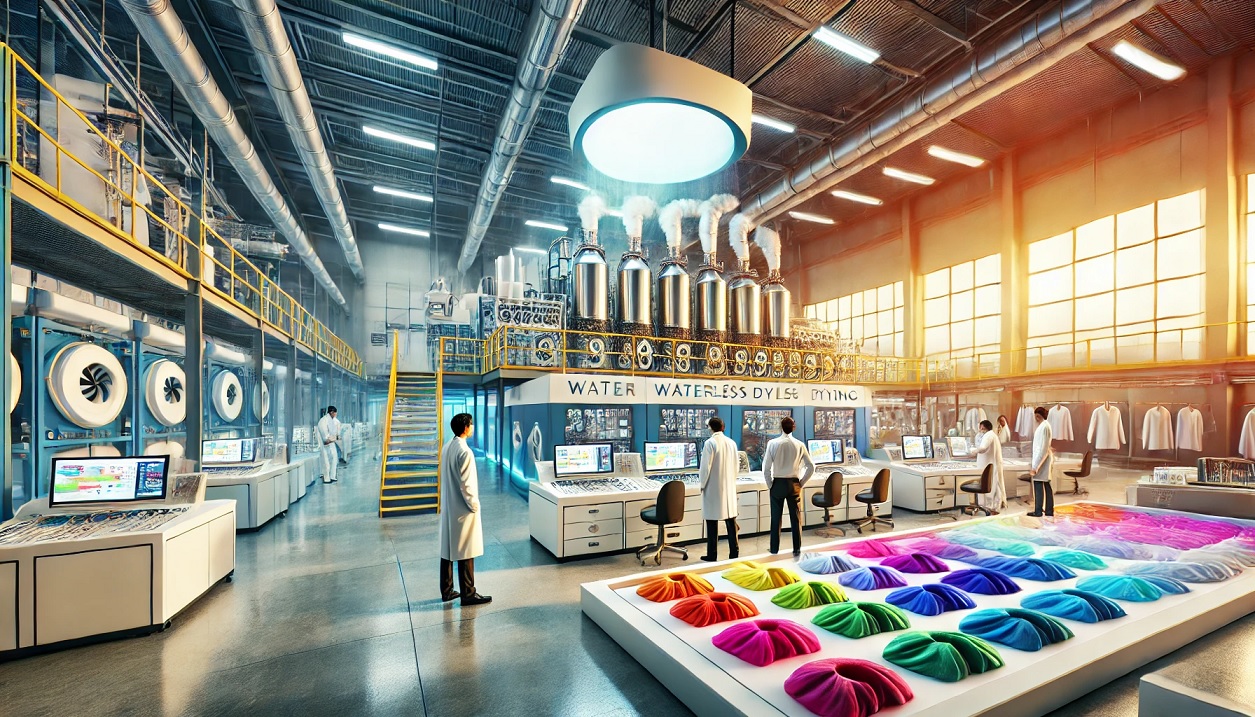Textiles are essential for our daily lives. We use them for clothing, furniture, medical equipment, buildings, vehicles, and more. However, the textile industry is also one of the most resource-intensive and polluting sectors in the world. It consumes huge amounts of water, energy, chemicals, and raw materials, and generates large amounts of waste, greenhouse gas emissions, and microplastics. According to the European Environment Agency (EEA), textile consumption in Europe has the fourth highest impact on the environment, after food, housing, and transport.
To address these challenges, the European Commission has proposed a new EU Strategy for Sustainable and Circular Textiles The strategy aims to transform the way textiles are designed, produced, consumed, and disposed of in the EU, while ensuring the competitiveness and resilience of the textile sector. It is part of the European Green Deal, the Circular Economy Action Plan, and the Industrial Strategy.
In this article, we will explain what sustainable and circular textiles are, why we need a strategy for them, and what are the main objectives and actions of the strategy. We will also provide some practical tips on how to make textiles more sustainable and circular, and how to support the textile sector in the transition.
What are sustainable and circular textiles?
Sustainable textiles are textiles that are produced and consumed in a way that minimizes their environmental impact and respects social rights. They are made of natural or recycled materials that are free of hazardous substances, use less water and energy, emit less greenhouse gases, and generate less waste. They are also durable, repairable, reusable, recyclable, or biodegradable.
Circular textiles are textiles that follow the principles of circular economy, which means that they keep their value and quality as long as possible, avoid waste generation, and use resources efficiently. They are designed for multiple cycles of use, repair, reuse, remanufacturing, or recycling. They also contribute to closing material loops by using recycled or renewable materials as inputs.
Why do we need a strategy for sustainable and circular textiles?
The current textile system is largely linear and unsustainable. It is based on a “take-make-dispose” model that relies on extracting large amounts of virgin resources, producing low-quality products with short lifespans, and discarding them after use. This system creates significant environmental and social problems along the textile value chain.
Some of the main problems are:
- High resource consumption: The textile industry uses about 9% of global water resources, 4% of global land use, 2% of global energy consumption, and 1% of global chemical production. It also consumes about 120 million tonnes of non-renewable fibres per year, mostly synthetic or cotton.
- High environmental impact: The textile industry is responsible for about 8% of global greenhouse gas emissions, 20% of global industrial water pollution, 35% of microplastics in the oceans, and significant biodiversity loss. It also generates about 92 million tonnes of textile waste per year, most of which is incinerated or landfilled.
- Low circularity: Only about 12% of textile materials are recycled into new textiles, and less than 1% of clothing is recycled into new clothing. The rest is either downcycled into lower-value products, such as insulation or wiping cloths, or lost in the process. The recycling rate of textiles in the EU is even lower, at about 8%.
- Low quality and durability: The average lifespan of a garment has decreased by 36% in the last 15 years, and the average number of times a garment is worn before disposal has decreased by 40% in the last decade. This is partly due to the rise of fast fashion, which produces cheap and trendy clothing that quickly goes out of style or falls apart. It is also due to the lack of information and incentives for consumers to buy durable and repairable products, or to take care of them properly.
- Low social standards: The textile industry employs about 60 million people worldwide, mostly women and children. However, many of them work in poor and unsafe conditions, with low wages, long hours, and no social protection. They are also exposed to health risks from hazardous chemicals, dust, noise, and heat. Moreover, they often face human rights violations, such as forced labour, child labour, discrimination, harassment, and violence.
These problems pose serious threats to the environment, human health, social justice, and economic development. They also undermine the EU’s commitments to achieve climate neutrality by 2050, to protect biodiversity by 2030, and to respect human rights and labour standards.
Therefore, we need a strategy for sustainable and circular textiles that can address these challenges and create a more resilient and competitive textile sector that benefits both people and the planet.
What are the main objectives and actions of the strategy?
The strategy presents the Commission’s vision for the textile industry by 2030. It sets out five main objectives:
- All textile products placed on the EU market are durable, repairable, and recyclable, to a great extent made of recycled fibres, free of hazardous substances, produced in respect of social rights and the environment.
- Fast fashion is out of fashion, and consumers benefit longer from high-quality affordable textiles.
- Profitable re-use and repair services are widely available, and the textiles sector is competitive, resilient, and innovative.
- Producers take responsibility for their products along the value chain, with sufficient capacities for recycling and minimal incineration and landfilling.
- The EU leads by example in promoting sustainable textiles globally.
To achieve these objectives, the strategy proposes a comprehensive set of actions that cover the entire lifecycle of textile products. These actions include:
- Setting design requirements for textiles to make them last longer, easier to repair and recycle, as well as requirements on minimum recycled content.
- Providing clearer information and a digital product passport to consumers on the sustainability performance of textile products.
- Reversing overproduction and overconsumption, and discouraging the destruction of unsold or returned textiles.
- Addressing the unintentional release of microplastics from synthetic textiles.
- Banning greenwashing and empowering consumers to choose sustainable fashion.
- Introducing mandatory and harmonized extended producer responsibility schemes for textiles in all Member States.
- Restricting the export of textile waste and promoting sustainable textiles globally.
- Incentivizing circular business models, including reuse and repair sectors.
- Encouraging public procurement and social dialogue for sustainable textiles.
How to Make Textiles More Sustainable and Circular
As consumers, we can play an important role in making textiles more sustainable and circular. We can do this by changing our consumption patterns, choosing more sustainable products, taking care of them properly, and disposing of them responsibly. Here are some practical tips on how to do that:
Designing for durability, repairability and recyclability
When buying textile products, we should look for those that are designed to last longer, be easier to repair and recycle. We can check the labels or use online tools to find out more about the materials, quality, durability, repairability, recyclability, or environmental impact of the products. We can also look for certifications or labels that indicate that the products meet certain sustainability standards.
Some examples of such certifications or labels are:
- The EU Ecolabel: This is a voluntary label that identifies products that have a lower environmental impact throughout their lifecycle. It covers criteria such as energy efficiency, water consumption, chemical use, waste generation, recycled content, durability, repairability, recyclability, or biodegradability.
- The Global Organic Textile Standard (GOTS): This is a voluntary standard that ensures that textile products are made from organic fibres that are produced without harmful chemicals or genetically modified organisms. It also covers social criteria such
Providing clear and reliable information to consumers
As consumers, we should also seek clear and reliable information about the sustainability performance of textile products. We should be able to compare different products based on their environmental and social impact, and make informed choices. We should also be aware of the potential greenwashing practices that some producers or retailers may use to mislead us or exaggerate their claims.
To help us with this, the EU Strategy for Sustainable and Circular Textiles proposes to provide us with a digital product passport for textile products. This will be a tool that will give us access to relevant information about the product’s origin, composition, durability, repairability, recyclability, environmental footprint, and social conditions of production. It will also enable traceability along the value chain and verification of claims.
The strategy also proposes to ban greenwashing and empower us to choose sustainable fashion. This means that producers and retailers will have to comply with strict rules on making environmental or social claims, and provide evidence to support them. It also means that we will have access to education and awareness-raising campaigns on sustainable textiles, as well as tools and platforms that can help us find sustainable fashion options.
Reducing overproduction and overconsumption
Another way to make textiles more sustainable and circular is to reduce the amount of textiles that are produced and consumed. This can help save resources, reduce waste, and lower emissions. It can also help us appreciate the value and quality of textile products, and avoid unnecessary purchases.
To achieve this, the EU Strategy for Sustainable and Circular Textiles proposes to reverse overproduction and overconsumption, and discourage the destruction of unsold or returned textiles. This means that producers and retailers will have to adopt more responsible production and marketing practices, such as producing on demand, offering rental or leasing services, or using digital technologies to optimize inventory and distribution. It also means that they will have to ensure that unsold or returned textiles are reused or recycled, rather than incinerated or landfilled.
As consumers, we can also contribute to this by changing our consumption habits. We can buy less but better quality products, choose timeless and versatile styles, or opt for second-hand or vintage clothing. We can also participate in sharing or swapping platforms, or join clothing libraries or subscription services. We can also avoid impulse buying, online returns, or throwing away unwanted clothes.
Preventing microplastics pollution
Microplastics are tiny pieces of plastic that are smaller than 5 millimeters. They can be released from synthetic textiles during washing, drying, wearing, or disposing of them. They can then enter the environment through wastewater, air, soil, or solid waste. They can pose serious risks to marine life, biodiversity, human health, and food safety.
To prevent microplastics pollution from textiles, the EU Strategy for Sustainable and Circular Textiles proposes to address the unintentional release of microplastics from synthetic textiles. This means that producers will have to design synthetic textiles that shed less microfibers during their use phase. It also means that they will have to use more recycled or biodegradable synthetic fibers in their products.
As consumers, we can also take some actions to reduce microplastics pollution from textiles. We can choose natural or organic fibers over synthetic ones, or look for certifications or labels that indicate low microfiber shedding. We can also wash our clothes less frequently, use cold water and gentle cycles, use liquid detergents instead of powders, use filters or bags in our washing machines or dryers, or air dry our clothes instead of using tumble dryers.
Banning greenwashing and promoting green fashion
Greenwashing is a practice where producers or retailers make false or misleading claims about the environmental or social benefits of their products or services. They may use vague terms such as “eco-friendly”, “natural”, “organic”, “recycled”, or “fair trade” without providing any evidence or certification. They may also use logos or labels that look like official seals of approval but are not.
Greenwashing can deceive consumers into buying products that are not as sustainable as they claim to be. It can also undermine the credibility and competitiveness of genuine sustainable producers and retailers. It can also hinder the transition to a more sustainable and circular textile sector.
To ban greenwashing and promote green fashion, the EU Strategy for Sustainable and Circular Textiles proposes to introduce strict rules on making environmental or social claims on textile products. This means that producers and retailers will have to provide clear and reliable information on the sustainability performance of their products, backed by evidence and verification. It also means that they will have to comply with existing EU legislation on unfair commercial practices.
How to Support the Textile Sector in the Transition
The transition to sustainable and circular textiles is not only a challenge, but also an opportunity for the textile sector. It can help improve its competitiveness, resilience, and innovation, as well as create new jobs and markets. However, it also requires significant investments, skills, and cooperation among all stakeholders.
To support the textile sector in the transition, the EU Strategy for Sustainable and Circular Textiles proposes a comprehensive set of measures that include:
Introducing extended producer responsibility schemes
Extended producer responsibility (EPR) is a policy approach that makes producers responsible for the environmental impact of their products throughout their lifecycle, including after they become waste. It aims to incentivize producers to design more sustainable and circular products, and to finance and organize the collection, sorting, reuse, and recycling of their products.
The EU Strategy for Sustainable and Circular Textiles proposes to introduce mandatory and harmonized EPR schemes for textiles in all Member States by 2025. This means that producers will have to pay a fee based on the weight and sustainability performance of their products, and ensure that they are collected and treated properly. The fee will also cover the costs of awareness-raising campaigns and consumer information.
Restricting the export of textile waste and promoting global standards
The EU is one of the largest exporters of textile waste in the world. It exports about 1.5 million tonnes of textile waste per year, mostly to developing countries in Asia and Africa. However, these countries often lack the capacity and infrastructure to handle this waste properly, leading to environmental and social problems.
The EU Strategy for Sustainable and Circular Textiles proposes to restrict the export of textile waste and promote sustainable textiles globally. This means that the EU will apply stricter rules on the export of textile waste, in line with the Basel Convention. It will also support developing countries in improving their waste management systems, as well as their social and environmental standards in the textile sector. Moreover, it will promote global cooperation and dialogue on sustainable textiles, and advocate for higher international standards.
Incentivizing circular business models and innovation
Circular business models are business models that aim to create value by keeping resources in use for as long as possible, avoiding waste generation, and using resources efficiently. They include models such as product-as-a-service, sharing economy, or circular supply chain.
The EU Strategy for Sustainable and Circular Textiles proposes to incentivize circular business models and innovation in the textile sector. This means that the EU will provide financial support, such as grants, loans, guarantees, or tax incentives, to help textile companies adopt circular business models or invest in circular innovation. It will also facilitate access to markets, networks, knowledge, and skills for circular entrepreneurs and innovators.
Encouraging public procurement and social dialogue
Public procurement is the process by which public authorities purchase goods or services from suppliers. It accounts for about 14% of the EU’s GDP, making it a powerful tool to influence the market and drive change.
The EU Strategy for Sustainable and Circular Textiles proposes to encourage public procurement and social dialogue for sustainable textiles. This means that the EU will provide guidance and support to public authorities on how to procure sustainable textiles, such as uniforms, furniture, or medical equipment. It will also promote social dialogue among employers, workers, trade unions, NGOs, and other stakeholders in the textile sector, to ensure fair working conditions, social protection, and skills development.
Conclusion
The EU Strategy for Sustainable and Circular Textiles is a bold and ambitious initiative that aims to transform the textile industry in Europe and beyond. It sets out a vision for a more sustainable and circular textile sector that respects the environment, human rights, and social justice. It also proposes a comprehensive set of actions that cover the entire lifecycle of textile products.
By implementing this strategy, the EU hopes to achieve multiple benefits for both people and the planet. These include:
- Reducing the environmental impact of textiles by 30% by 2030.
- Saving 1 billion tonnes of CO2 emissions by 2050.
- Creating 160 000 new jobs by 2030.
- Increasing consumer satisfaction and trust.
- Enhancing competitiveness and innovation.
- Leading by example in promoting sustainable textiles globally.
As consumers, we can also play an important role in making this strategy a success. We can do this by choosing more sustainable and circular textile products, taking care of them properly, disposing of them responsibly, supporting circular businesses, and demanding higher standards from producers and retailers.
Together, we can make textiles more sustainable and circular for a better future.
FAQs
Q: What are some examples of sustainable or circular textile products?
A: Some examples of sustainable or circular textile products are:
- Organic cotton: Cotton that is grown without synthetic pesticides or fertilizers, and that uses less water and energy than conventional cotton.
- Recycled polyester: Polyester that is made from recycled plastic bottles or other plastic waste, and that uses less water, energy, and chemicals than virgin polyester.
- Tencel: A type of cellulose fiber that is made from wood pulp from sustainably managed forests, and that uses a closed-loop process that recovers and reuses water and solvents.
- Hemp: A type of bast fiber that is made from the stem of the cannabis plant, and that is durable, biodegradable, and resistant to pests and diseases.
- Piñatex: A type of leather alternative that is made from pineapple leaf fibers, and that is vegan, biodegradable, and creates additional income for pineapple farmers.
Q: How can I find out more about the sustainability performance of textile products?
A: You can find out more about the sustainability performance of textile products by:
- Checking the labels or tags on the products, which may indicate the materials, origin, certifications, or care instructions of the products.
- Using online tools or apps, such as Good On You, Fashion Revolution, or Clear Fashion, which can provide ratings, reviews, or information on the environmental and social impact of textile brands or products.
- Asking questions to the producers or retailers, such as where, how, and by whom the products were made, what materials and processes were used, how they ensure the quality and durability of the products, or how they handle unsold or returned products.
Q: How can I take care of my textile products properly?
A: You can take care of your textile products properly by:
- Washing them less frequently, using cold water and gentle cycles, using liquid detergents instead of powders, using filters or bags in your washing machines or dryers, or air drying them instead of using tumble dryers.
- Repairing them when they are damaged, such as sewing buttons, patching holes, or mending tears. You can do it yourself or use professional repair services.
- Reusing them when they are no longer suitable for their original purpose, such as turning them into rags, bags, or accessories. You can do it yourself or use creative reuse platforms.
- Recycling them when they are no longer usable, such as donating them to charity shops, collection points, or recycling facilities. You can also use take-back schemes offered by some producers or retailers.
Q: How can I support circular businesses in the textile sector?
A: You can support circular businesses in the textile sector by:
- Buying from circular brands or retailers that offer sustainable and circular textile products or services. You can find them online or in your local area.
- Participating in circular platforms or initiatives that facilitate the sharing, swapping, renting, leasing, or subscription of textile products. You can find them online or in your local area.
- Investing in circular projects or innovations that aim to create new solutions for sustainable and circular textiles. You can find them online or in your local area.
Q: How can I demand higher standards from producers and retailers?
A: You can demand higher standards from producers and retailers by:
- Asking questions to the producers or retailers about their sustainability practices and performance. You can use online tools or apps to help you with this.
- Giving feedback to the producers or retailers about their products or services. You can use online platforms or social media to share your opinions or experiences.
- Joining campaigns or movements that advocate for more transparency, accountability, or regulation in the textile sector. You can find them online or in your local area.



